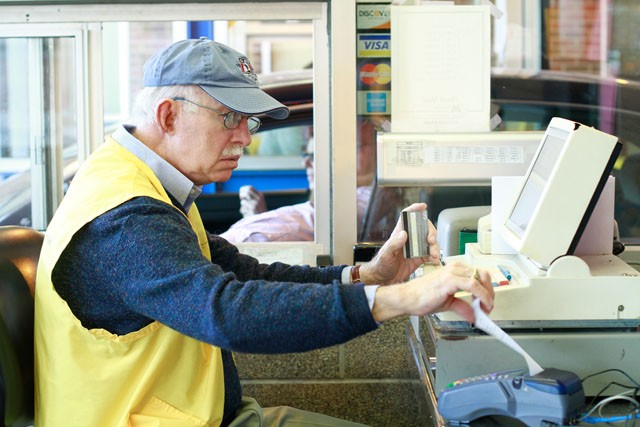Beginning in late May, the University of Minnesota will roll out automated pay machines in parking ramps and garages, in turn cutting about 65 campus jobs.
The new machines will save the University $1.4 million a year through employee layoffs and collecting money at all hours of the day, Parking and Transportation Services spokeswoman Jacqueline Brudlos said.
âÄúThis really isnâÄôt new technology,âÄù she said. âÄúIf you drive to the airport, if you drive downtown, you use automated parking ramps all the time. Automation is just kind of the wave of the future.âÄù
The first layoffs come late next month, when the transition begins at the 21st Avenue ramp on West Bank. There, PTS will install machines as part of a four- to six-week trial run in just the one location.
Once PTS is assured the new system runs without bugs, installation will begin within two years at all 16 University ramps and garages, as well as at a few flat lots across campus.
Brudlos said she doesnâÄôt imagine any issues.
The employee layoffs will be gradual as each new ramp switches over to automation. Overall, PTS expects to lay off about 15 full-time positions and 50 part-time student positions.
Currently, about 25 full-time employees and 200 students work for PTS, Brudlos said.
âÄúWe think that itâÄôs going to harm the University in the long run,âÄù said Sue Mauren, principle officer of Teamsters Local 320, which represents the full-time employees. âÄúI donâÄôt think machines will ever replace the people that work here.âÄù
Mauren said parking attendants at the University do more than machines by helping direct visitors and providing additional security at ramps targeted for auto theft.
âÄúItâÄôs real unfortunate, and I hate to see any job loss,âÄù Mauren said. âÄúMany of these people are longtime employees and have contributed a lot to the University, and I think it is a real sad situation for them.âÄù
Before making the decision to switch, PTS researched and talked to Twin Cities public organizations and private companies that use the automated system, Brudlos said.
âÄúWeâÄôre really not doing anything you donâÄôt see anywhere else, weâÄôre just bringing it on the University of Minnesota campus,âÄù Brudlos said.
Both the union and the University have been working to try and move cut employees to other positions on campus. Some jobs will also be created to help manage the new machines, Brudlos said.
The current plan to gradually lay off employees is preferable to eliminating all the employees at once, Mauren said, because in the interim workers have time to find new positions. But she called the layoffs a âÄúmoving targetâÄù because itâÄôs still uncertain exactly how many positions will be cut.
While the $1.6 million project will quickly become a return on investment, it will not result in lower parking prices, Brudlos said.
As a self-supporting department, PTS needs income to cover expenses.
Positions held by students will take less of a blow because many part-time positions are needed for large events, like sports, for which operations wonâÄôt change âÄî patrons will still pay people as they enter ramps, and then employees will open the gates so fans can make a quick exit afterward.
âÄúEvent parking will not go away,âÄù Brudlos said. âÄúWhen there is a hockey game, there will still be attendants taking money.âÄù
Not all of the savings come from staff cuts, and PTS expects to make more money because machines will be operating the entire day and collect revenue that is missed during early morning hours when ramps and garages are unstaffed and gates are left up for free parking.

U to automate parking ramps, cutting jobs
The move will save $1.4 million a year, but it will eliminate about 65 jobs.
Published April 14, 2011
0

